Using Filters in Advanced Search
Learning Objectives
- Learn how to use filters in advanced search
- Refine searches to obtain more precise results
- Use the "is in (x,y)" rule to filter from a list of values
From the advanced search, you can use filters to refine your results. These filters function like a funnel to narrow down your search results. The available filters on an attribute depend on the settings configured by the administrator.
Filtering Search Results
-
From the Advanced Search page, perform a search based on the type of objects, document type (if the object type is “document”), and keywords.

-
Click on Add a filter below. Select from the list the type of filter you want to apply to your search results. There are two types:
- Filter on global data (e.g., "code," "classification," "completeness," "tag," "workflow," etc.)
- Filter on an attribute (e.g., "Name" and any filterable attribute configured in the data model)

-
A window opens. Using the button at the bottom left, you can refine the filter according to:
- Filter by value
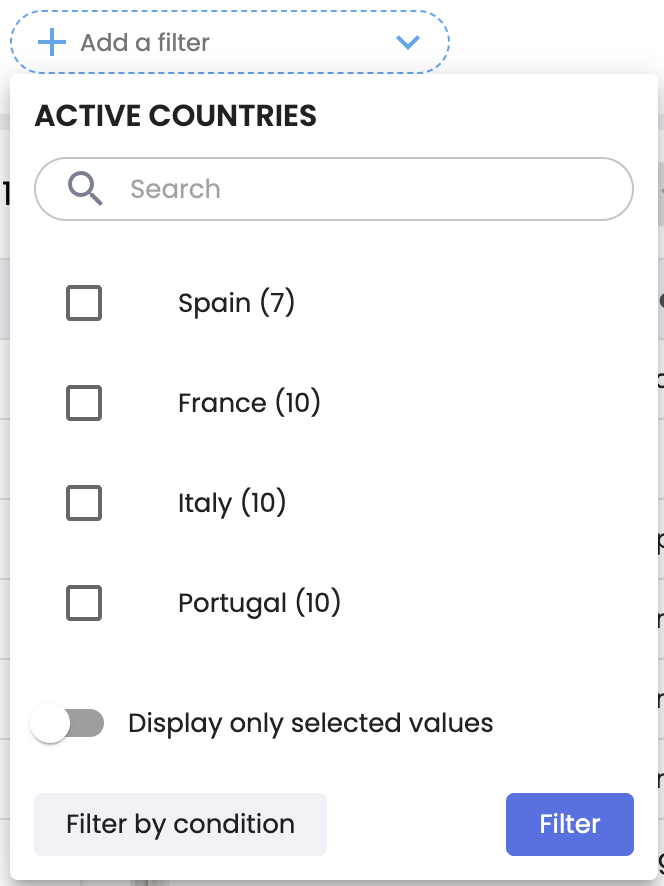
- or filter by condition
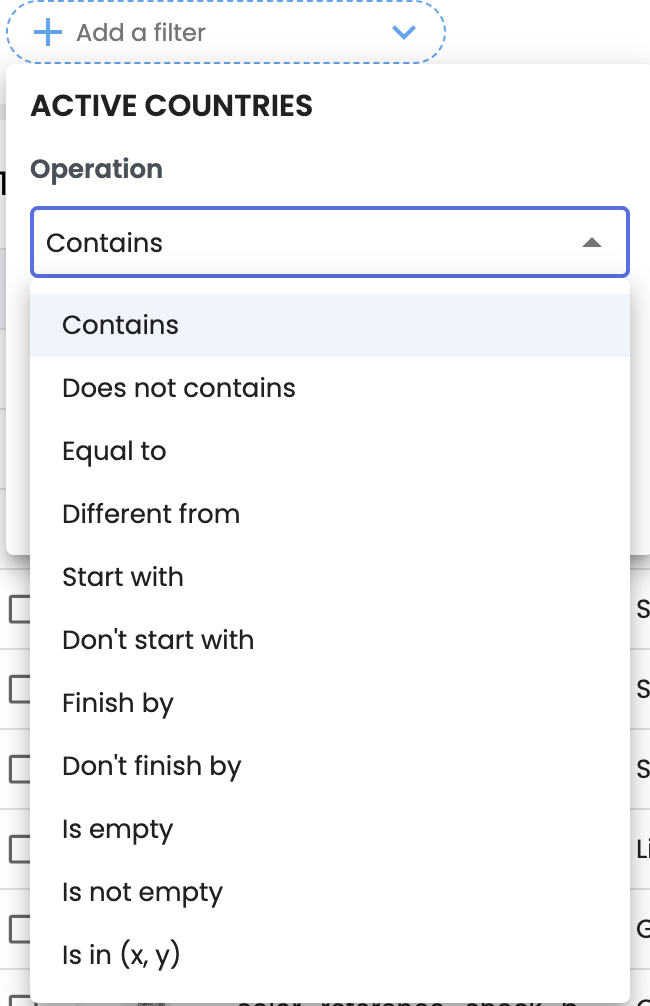
-
Finally, click on the “Filter” button to apply your filter settings.
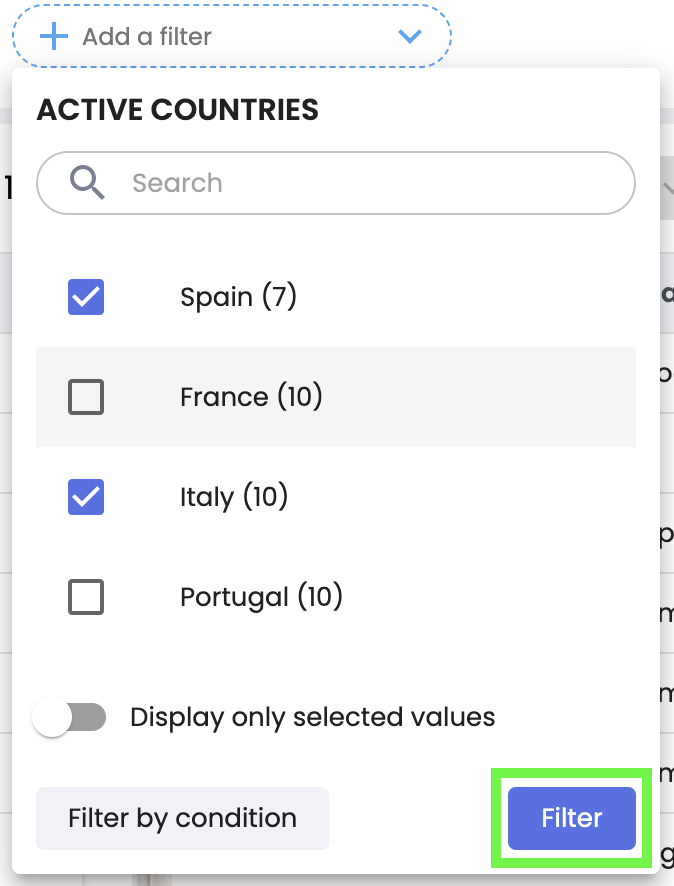
-
You can combine multiple filters sequentially, further narrowing your search results by tightening the funnel on the data.
-
Your search results are displayed in the main window.
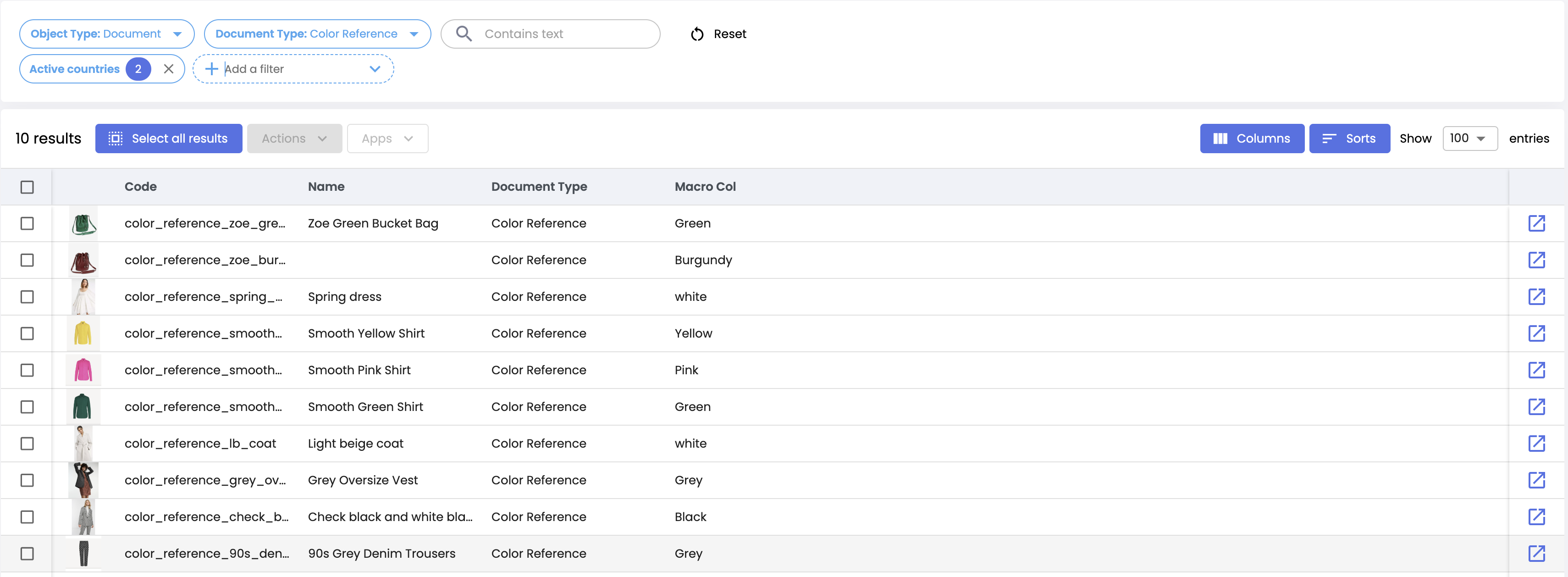
Using the Filter Condition by Operation: "is in (x,y)"
The "is in (x,y)" rule allows filtering on a list of known values. This list can contain as many values as needed. For example, if you want to filter documents to display only results with known document codes, this filter condition provides the solution.
You have the following document code list and want to display only these results:
- reference_90s_denim_trousers
- reference_coat
- reference_dress
- reference_oversize_vest
- reference_oversize_vest_copy
- reference_smooth_shirt
- reference_zoe_bucket_bag
-
From the Advanced Search page, perform a search based on object type, document type (if the object type is “document”), and keywords.
-
Click on “Add a filter” below. Select “code” from the list of global data.
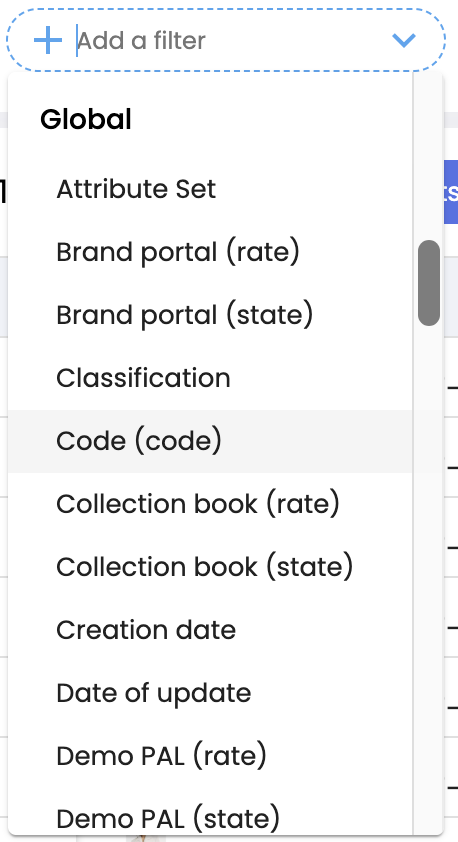
-
A window opens. Click on Filter by conditions to refine the data, then select the operation is in (x,y).

-
Enter the document codes one after another in the input field, separated by a comma “,” or copy/paste the list directly from a spreadsheet or text list.
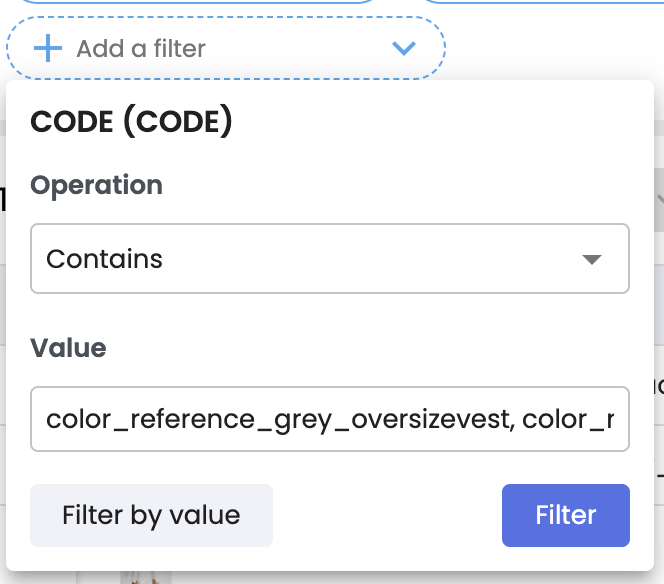
-
Click on the “Filter” button to apply your filter settings.
-
Your search results are displayed in the main window.
SummaryAccess to filters:
- Filters are available after performing an advanced search.
- You can add filters by selecting the type (global data or attribute).
Filter refinement:
- Filters can be refined using predefined values or operational conditions.
Combining filters:
- Multiple filters can be combined to restrict results to very specific data.
Using the "is in (x,y)" rule:
- This condition filters objects based on a list of known values, such as document codes.
- Values can be entered manually or pasted directly from a list.
Next Chapter
Now that you have mastered the filter functions in advanced search, let's explore how to Navigate through Classifications.
Updated 3 months ago
